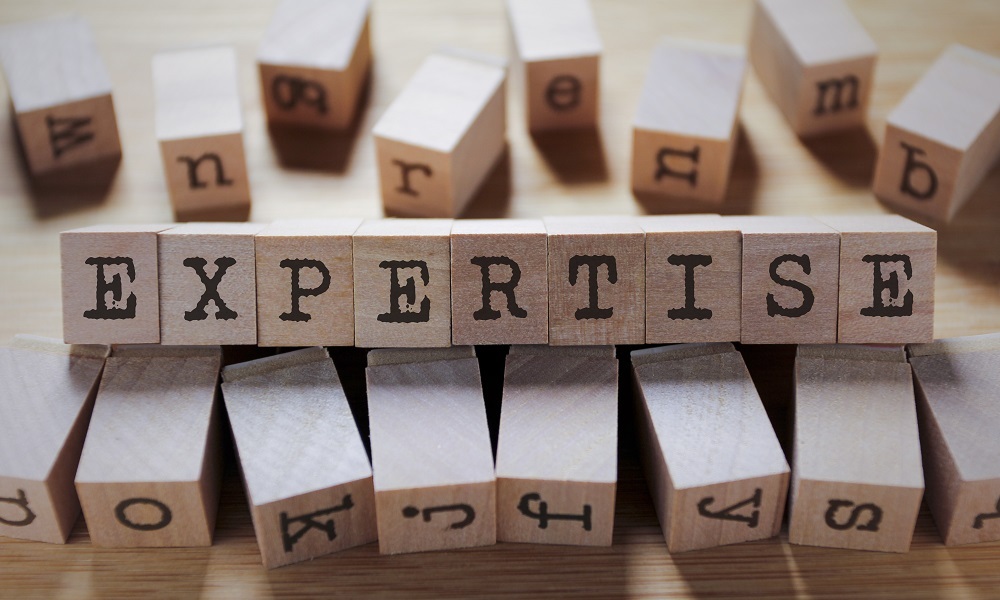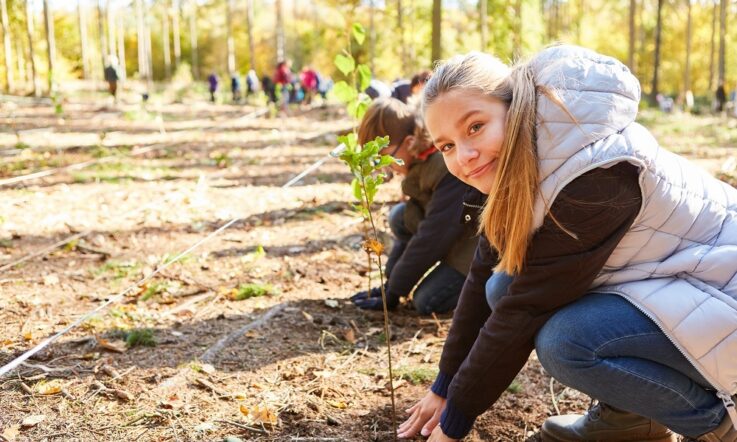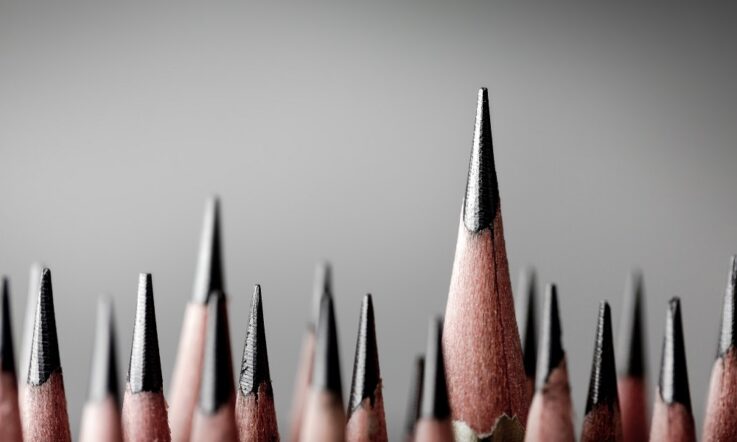This podcast from Teacher is supported by the Victorian Government. Generous financial incentives are available for qualified early childhood teachers and educators to take up positions across Victoria. Relocation support is also available. Learn more about opportunities at vic.gov.au/kinder.
Thanks for tuning in to this episode of Teacher Staffroom, where we catch you up on the latest evidence, insight, and action in education. I'm Dominique Russell.
At Teacher we love to recognise the work of teachers and school leaders who are improving practice and student outcomes and bring you the latest on research from experts in the field. We’ve highlighted the work and expertise of many in the past few weeks at the magazine, so in this episode, I’m going to bring you up to speed on these stories.
Like all episodes of Teacher Staffroom, I’ll be posing some questions throughout the podcast, so feel free to pause the audio as you go, gather some colleagues, and discuss together how these stories might be relevant to your school context. Let's jump in.
When you reflect on the first few months of the school year, one thing that might come to your mind is ChatGPT. When it arrived, did it worry you? Did you understand how it works and what it’s capable of? It’s certainly a lot to get your head around, but in a recent podcast episode, we turned to some experts to explore some key issues around assessment and equity.
We spoke with Dr Catherine McClellan, Deputy CEO of Research and Assessment at ACER, Pasi Sahlberg, a professor of educational leadership at the Melbourne Graduate School of Education at the University of Melbourne and Professor George Siemens, Director of the Centre for Change and Complexity in Learning at the University of South Australia. If you missed the episode, definitely add it to your listening list because we cover a lot in the conversation.
Here though, I’d like to highlight one section with you that I found really interesting. It’s something Pasi Sahlberg said – here he is:
In Australian high schools, a good way to find ways forward is to combine the collective professional wisdom of teachers about teaching and learning, and this fresh insight and experience of students as learners. How do they see the best use of this type of chat bot in their own learning?
That point there brings me to a question I’d like to pose to you. How do you see ChatGPT improving teaching and learning in schools? Have you asked students how they could use this technology in their own learning? How will you be ensuring that students learn which parts of ChatGPT to trust, and which to be weary of?
Speaking of new technology, our Deputy Editor Rebecca Vukovic had a really interesting conversation with researchers from the University of Queensland about the work they’re doing to help teachers improve the air quality in their classrooms, improve students’ cognitive performance and decrease the risk of contracting COVID-19 at the same time.
In the article, they shared the details of their citizen scientist project which was established in 2020 to teach students about ventilation and also teaches students to build their own indoor air quality sensors to monitor the air quality in their classrooms.
Something that stuck out to me in the article was when one of the researchers, Dr Stephen Snow, said that unlike heat or cold stress which we become aware of quickly, humans can’t always sense poor air quality until it is bad enough to affect our work performance and capacity to concentrate. Here’s a quote from his colleague, Dr Marie Boden, about how students in their study are measuring air quality to prevent these negative impacts on work performance. This is what she had to say:
If the carbon dioxide levels are too high in a room, that’s when we start to get a bit groggy, you feel a bit tired and you find it harder to think clearly. And so those are the levels that we are measuring. We tell the kids the levels they need to look for.
This discussion is one that I’m sure will have you thinking about the situation in your own school setting. So, here are some specific questions to think about. Reflect on a time when you noticed students were becoming groggy and were having difficulties concentrating. Had you considered the quality of the air inside your classroom? If you opened a window, did you notice any improvement in the students’ levels of concentration?
Another expert we spoke to recently was ACER’s Dr Dan Cloney. He’s a Senior Research Fellow in the Education Policy and Practice Program and a Member of the Centre for Global Education Monitoring. He’s also a Keynote speaker at ACER’s upcoming Research Conference 2023. The theme for the conference, which is taking place on the 3rd and 4th of September, is Becoming lifelong learners: Improving the continuity of learning from birth to 12 years and in our Q&A article with Dan, he spoke about early years transitions, assessment and learning progressions.
On transitions, we asked Dan how important the transition is between early years settings to primary school and what kind of difference an effective transition can make. Here is what he had to say:
The transition is important – but not because of the reason you might think. All children make the transition into school, so it represents an important point in life. Increasingly, however, we realise that children all learn and develop at their own pace: just because children go to school when they are 5 doesn’t mean they all have the same skills and abilities. An effective transition, therefore, is making sure that schools are ready to meet each child at their own level and support them to make good progress from day one.
So, on this topic, here is a question to think about either on your own or with some colleagues. As a teacher working with early years students in a school setting, how often do you collaborate with your counterparts in preschool and long daycare settings about the children you are working with now and the children who are due to make the transition next year?
Coming up, we’ll take a look at the expertise of some teachers working in and with schools across the country. But first, here’s a quick message from our sponsor.
Victoria needs more Kinder teachers and educators. Make the move and you’ll be rewarded with $9000 plus relocation support. So now you can turn a rewarding career into a great adventure. Learn more at vic.gov.au/kinder. Best start, best life. Authorised by the Victorian Government, Melbourne.
Long-time readers of ours will be familiar with the Telstra ARIA Music Teacher of the Year award. We recently spoke with the latest winner, Matt Orchard, about how he’s improving student outcomes at his school, Apollo Bay P-12 College in regional Victoria.
When Matt arrived at the school in 2000, music lessons were conducted in rundown portables. A few years later, they had a major upgrade and now operate in a room with 2 band spaces, 3 tutorial rooms and a recording studio. In the article, Matt shares more about his teaching story, so if you’d like to read the full piece, just head to our website, teachermagazine.com and click on the article for this podcast episode. There you’ll find the link to the article and all the other pieces of content I’m mentioning in this episode.
I also had the pleasure of speaking with Dr Scott Sleap from New South Wales recently. His name might sound familiar to you, because we spoke with Scott almost 5 years ago now when he was named winner of the Prime Minister’s Prize for Excellence in Science Teaching in Secondary Schools. He was recognised for his commitment to expanding STEM education in Australian schools, particularly in regional, rural and remote areas.
He has continued this work to this day and recently, Scott was announced as the recipient of The Park Family Churchill Fellowship. Through this Fellowship, he’ll work to inspire more young people to consider careers in space and continue to grow Australia’s future STEM workforce.
His Fellowship project involved travelling to the US for 7 weeks on a study tour. The trip included meetings at the White House and visits to multiple NASA sites, Google and other industries. Scott also presented at the Space Exploration Educators Conference at NASA’s Houston Space Centre to share the work being done in Australia. Here’s what Scott has to say about careers in space:
The space industry will be worth $1 trillion by 2040 and Australia has the opportunity to be a key player, but we need to ensure we have the workforce. I’ve been involved in workforce development for a long time with the purpose of building the space workforce of the future … It became apparent that aerospace is a fantastic way to engage students more generally in STEM. Space in particular is non gendered, with interest equally amongst boys and girls. Therefore, space appeared to be the perfect vehicle for engaging students’ interest in STEM.
So, considering that quote, here are 2 questions for you to think about. At your school, is there a gender balance in STEM enrolments? Do students have the opportunity to learn about aerospace? How could you introduce this to future lessons?
The final story I’d like to share with you in this episode is sharing the work of a school that has been recognised for their commitment to reconciliation.
At Briar Road Public School in Southwest Sydney, Aboriginal culture and education is embedded in the curriculum. Almost half of students are First Nations students, and the school also has 2 Aboriginal Culture and Curriculum teachers employed. In 2021, the school was recognised for their reconciliation initiatives by being named a finalist in the Schools category for the Narragunnawali Reconciliation in Education Awards.
In the article, we spoke with one of the Aboriginal Culture and Curriculum teachers, Jason Sampson. He shared an example of how Aboriginal education is embedded in the curriculum, which is teaching students to throw a boomerang when learning about aerodynamics by discussing Science and Mathematical concepts like lift and drag. Here’s what he had to say:
That work comes from not just us giving an Aboriginal perspective. That work comes from a team environment of having a lead teacher of Science saying, “I've got these lessons here. Can I put an Aboriginal perspective there?” and then working together to make sure that it fits and moulds into a really good lesson … It’s been something that’s made it sustainable and embedded in everyday practice right through Science, History and Geography, there’s not just those ad hoc approaches or lessons anymore taught at those major celebration events. It’s lessons and content being taught in everyday practice … That old stigma of “I'm not sure how to teach that because I don’t know if it's culturally appropriate” is something that doesn't exist here because people are far more confident because it's been modelled to them.
So, considering what Jason said in that quote, here are some final questions for you to reflect on. As a school leader, how confident are your staff in integrating First Nations perspectives into their teaching? Have they had the opportunity recently to build their knowledge in this area?
That's all for this episode. You’re now all caught up on the latest evidence, insight and action. Links to all the content and the resources I’ve mentioned will be in the transcript of this podcast available over at our website, teachermagazine.com.
Subscribe to our podcast channel wherever you get your podcasts from, so you can be notified of any new episodes as soon as they land. And, while you’re there, we’d love if you could rate and review us.
This podcast from Teacher is supported by the Victorian Government. Generous financial incentives are available for qualified early childhood teachers and educators to take up positions across Victoria. Relocation support is also available. Learn more about opportunities at vic.gov.au/kinder.


